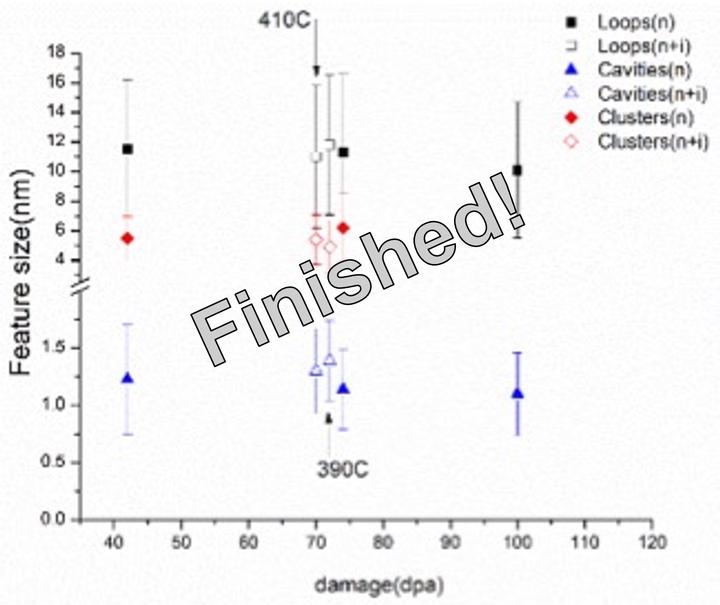Rapid Simulation of Irradiation Damage in PWR Internals
 Data by M. Song (UM)
Data by M. Song (UM)A significant portion of Pressurized Water Reactor (PWR) core internals, such as baffle-former plates, baffle bolts, core support plates, and core barrels, are fabricated from austenitic stainless steels. All of these are critical components to the successful operation of a PWR. Degradation of austenitic stainless steels are of upmost importance, especially in consideration of a second license renewal. Second license renewal would extend operation to 80 years resulting in PWR core internals reaching significantly higher damage doses (>100 dpa) than those previously anticipated. A need currently exists to have experimentally validated models to predict the deterioration in performance of austenitic stainless steels to high dose.
Several options are available to develop an experimental database on high dose (>60 dpa) performance of austenitic stainless steels including materials test reactor irradiations, proton irradiations, and self-ion irradiations. Materials test reactor irradiations are impractical due to their significant cost and low dpa/year output. Proton irradiations are attractive as they have been shown to have higher dpa rates than test reactors and successfully simulate changes in the microstructure. Given this, typical proton damage rates are still impractical to achieve doses greater than 60 dpa. Self-ion irradiations have significantly higher dose rates than those of proton or test reactor irradiations. Hence, to access damage doses above 60 dpa, the use of self-ion irradiations is required.
Self-ion irradiations have been primarily used to irradiate other nuclear reactor relevant materials such as ferritic steels. Many of these studies have tried to emulate nuclear reactor damage through both stages of radiation damage production: nucleation and growth. This has proved to be a complicated task, especially when one takes into consideration that the rates for both processes will vary depending on the different microstructural features of interest. A much simpler approach is to use self-ion irradiation after preliminary nuclear reactor irradiations to grow the microstructural features within the growth regime. In this manner, the nucleation processes will be completed using nuclear reactor relevant damage while the growth will have progressed using self-ion irradiation. Ultimately, this re-irradiation strategy is the idea behind the concept of rapid simulation of high fluence by self-ion irradiation. The objective of this study is to demonstrate that self-ion irradiation after reactor irradiation can “grow” an existing damage microstructure to higher dose levels and match those produced solely by reactor irradiation.